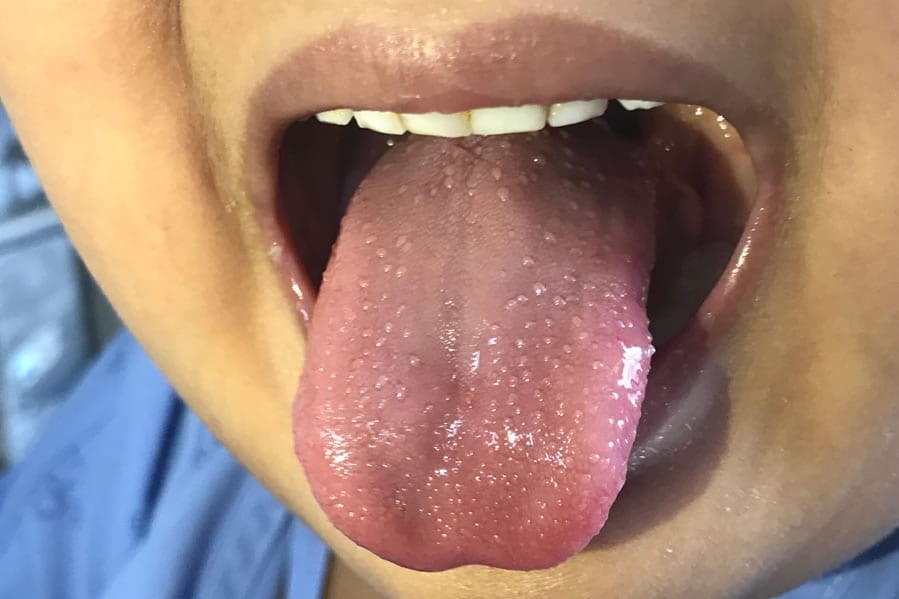
Kawasaki syndrome, the most common childhood vasculitis
Kawasaki syndrome is an infectious disease of unknown origin, discovered and classified in 1967 by a Japanese paediatrician, from whom it takes its name, who had observed a number of children with the same symptoms: fever, red blotchy rash, conjunctivitis, inflamed throat, swollen hands and feet, increased cervical lymph nodes
Shortly afterwards, it was seen that in that syndrome there were often cardiac complications, especially in the coronary arteries, and finally the disease was correctly identified as a vasculitis, i.e. a disease affecting small-calibre arteries, constituting together with Schönlein-Henoch purpura the most widespread acute systemic vasculitis in paediatric age.
Kawasaki disease: epidemiology
Kawasaki disease occurs worldwide, although the majority of reported cases are in Japan.
It predominantly affects children under 5 years of age, with a peak incidence between 18 and 24 months of age and a higher frequency in males.
Causes of Kawasaki syndrome
The cause of Kawasaki disease is not known, although it is suspected that it is triggered by an infection to which the body responds incorrectly from an immune point of view: contact with a virus or bacterium generates an excessive response, which has repercussions on the small arteries, causing inflammation of their walls, consequent weakening and possible dilatation up to the formation of aneurysms at the level of the coronary arteries.
Most probably the disease, which is definitely rare, affects children with a genetic predisposition (and this would explain the high incidence in Japan), although its pathogenetic mechanism has not yet been clarified.
Signs and symptoms of Kawasaki syndrome
The onset is fever with considerable irritability in the child.
The fever is accompanied or followed by bilateral non-secreting conjunctivitis and a rash that mimics traditional exanthematous diseases: enlarged spots as in measles, pale pink spots as in rubella, intensely reddened dots as in scarlet fever.
Mostly the face is affected, which, given the conjunctivitis, takes on an appearance very similar to that of a child with measles.
CHILD HEALTH: LEARN MORE ABOUT MEDICHILD BY VISITING THE BOOTH AT EMERGENCY EXPO
The trunk is also affected, while the limbs are usually spared.
At the level of the mucous membranes, there is reddening of the lips, which become cracked, of the tongue, which takes on a strawberry appearance as in scarlet fever, and of the throat, without formation of tonsillar plaques.
A characteristic aspect is swelling affecting the soles of the feet and the palms of the hands, with reddened skin, together with a ‘sausage-like’ swelling of all the fingers.
This swelling is followed, after 2-3 weeks, by characteristic peeling of the skin around the tips of the fingers and toes, which take on a reddish tinge in the palms and soles.
Changes in the mouth consist of reddening and cracking of the lips, of the tongue, which is red (commonly called the ‘strawberry’ tongue), and of the pharynx, which is also reddened.
More than half of the patients have enlarged cervical lymph nodes, but these are often a single lymph node at least 1.5 cm in diameter.
In some cases, joint pain and/or swelling, abdominal pain, diarrhoea and headache may also occur.
Cardiac involvement is the most serious manifestation, due to possible complications
A heart murmur may be heard and sometimes rhythm irregularities arise.
The different layers that make up the cardiac wall may show different degrees of inflammation and thus there will be pericarditis, myocarditis and endocarditis with involvement of one or more valves.
The main feature of the disease, however, is the development of coronary aneurysms: the small arteries dilate and the wall becomes stretched, producing a bulge that puts the life of the little patient at risk, given the possibility of rupture.
Kawasaki disease has a characteristic course that can be divided into three phases:
- an acute phase, lasting 2 weeks, with the presence of fever and the above-mentioned symptoms;
- a subacute phase, lasting 2-4 weeks, with an increase in the number of platelets in the blood and the possible appearance of aneurysms
- a convalescent phase, lasting 1-3 months, in which the laboratory tests (ESR, CRP, blood count, albumin, liver enzymes) normalise and the arterial changes are reduced or even disappear.
There may be a spontaneous resolution of the disease, with outcomes, however, in permanent arterial abnormalities.
Read Also:
Emergency Live Even More…Live: Download The New Free App Of Your Newspaper For IOS And Android
Herpes Zoster, A Virus Not To Be Underestimated
Ramsay Hunt Syndrome: Symptoms, Treatment And Prevention
Shingles: Symptoms, Causes And How To Ease The Pain
Paediatrics, What Is Reye’s Syndrome?


